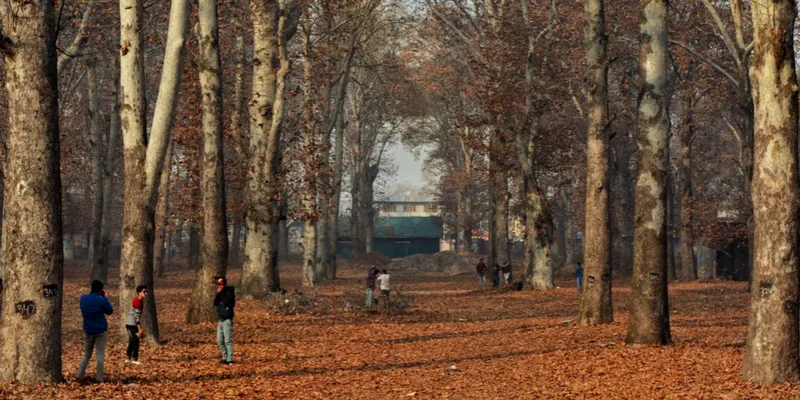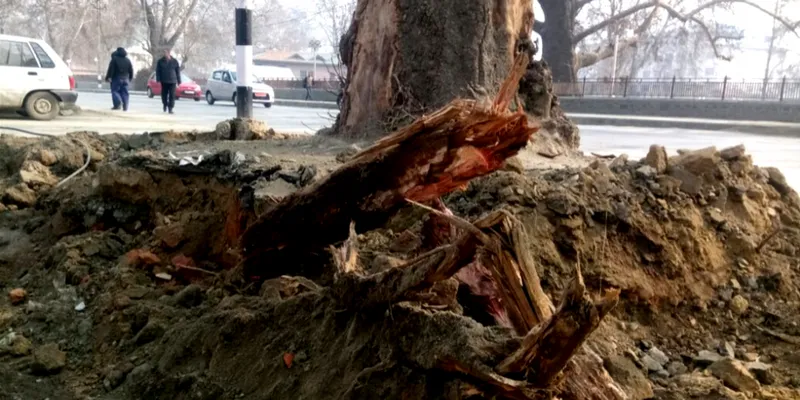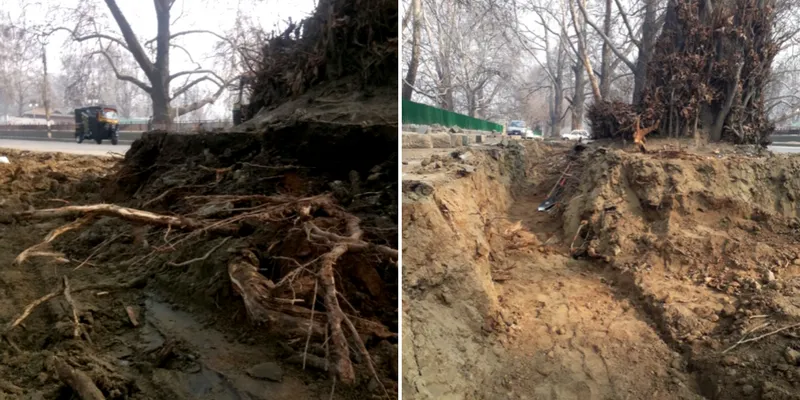Why the iconic Chinars of Kashmir trees are dying a slow death
From 40,000 during the 70s, the number of Chinars in Kashmir has reduced to just 5,000.

Kashmir has always well-known for its beauty, rich culture, and hospitality of its people. Adding to the scenic beauty of the place is the might Chinar or maple tree.
It is the symbol of the region and it is believed that once you visit Kashmir, you will get emotionally attached to the Chinar trees.
However, the sad fact is that the number of Chinars has reduced drastically in the last few decades.
According to reports - the number of Chinars that in Kashmir in the 70s were around 40,000 but today the number has reduced to a meagre 5,000 which is worrisome. However authorities refute these claims.
Legacy of the mighty tree
The majestic tree was brought to Kashmir by the Mughals. Emperor Akbar planted Chinars in the valley, after annexing Kashmir in 1586. Till today, hundreds of trees continue to stand tall at the site of the Hazratbal shrine in Naseem Bagh.

From Mughals to Maharajas, all the rulers treated Chinar as an integral part of Kashmir’s soul and existence. The Mughals even declared the Chinar as the Royal tree.
Known as buoon in Kashmiri and Platanus orientalis scientifically, it takes around 150 years for a Chinar to reach its full size.
Dying heritage
Today the Chinar is dying with people and the administration cutting them down in the name of construction or road widening.
Recently in broad daylight, in the heart of Srinagar, Lal Chowk, an old Chinar tree was damaged when a JCB was put into action by the R&B department for clearing the pavement. The roots were affected and this caused a huge hue and cry from the citizens.

Local journalist Rifat Abdullah took to Twitter to express his anger. “Massive destruction of our identity and heritage “Chinar trees” at Polo View Srinagar opposite GPO. It is a big crime committed by Govt itself.”
Naseer Ahmad Hussiani, floriculture officer in Srinagar, was unavailable to comment on the incident.
However, Deputy Commissioner - Srinagar, Syed Abid Rasheed said,
“The work has been stopped and we will take all the necessary steps to save these Chinars which are a part of Kashmir’s culture.”
Protection needed
Environmental and ecological experts are fighting for the preservation of Kashmir’s iconic tree but their efforts seem to be in vain as the felling of Chinars are still taking place despite the ban on cutting of the Chinar in 2009.
Environmental experts have been advocating for the preservation of the chinar. The chinar can be found almost everywhere in the valley – be it in villages or cities.
As MS Wadoo who is a researcher in forestry, plantation, and environment notes in his book, The Trees of Our Heritage,
“The oldest Chinar tree is located at Chattergram in Budgam district of Kashmir which is 700 years old.”
Chinars stand tall in all four seasons but shines most during the autumn as it displays a fiery hue. The leaves of the Chinar start to fall from mid-November to December end. The new leaves start to grow again by early April.

Director in the floriculture department, Mathora Masoom says, “We look after Chinars that fall under our jurisdiction, but the main custodians of Chinars is the district administration.”
Commenting on the damage of the Chinar tree, she added: “If anyroad widening is to be done, the concerned district administration is supposed to take technical advice from our department,t but we were not contacted by any member of the R&B department.
Chinars found in Nishat, Shalimar, Pari Mahal and various other Mughal gardens in the valley are marked and numbered by the Department of Floriculture.
The Chinar can grow to 30 metres in height and more. Their growth is more widespread due to the favourable climatic conditions. Chinars are deep-rooting trees, and the roots extend well beyond the crown area.
Realising the importance of Chinars, the Department of Floriculture - Kashmir provides saplings free of cost for everyone and every year, they conduct a rigorous plantation drive in the month of March when thousands of Chinars are planted.







